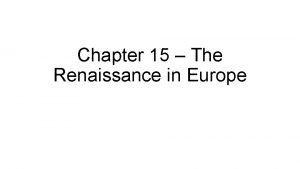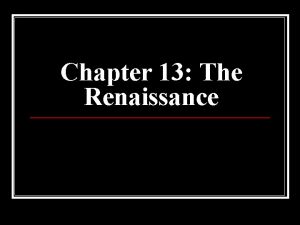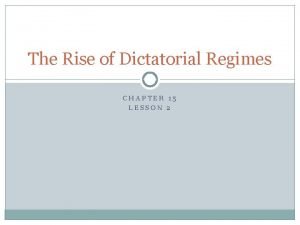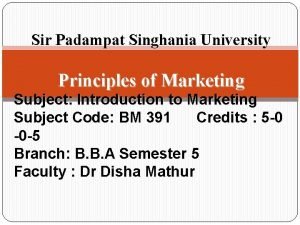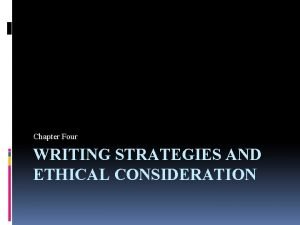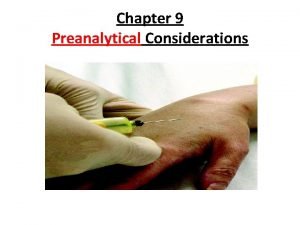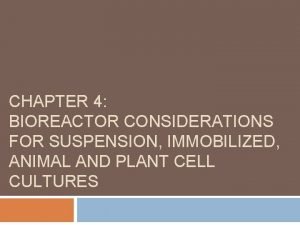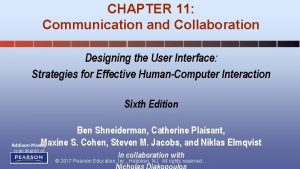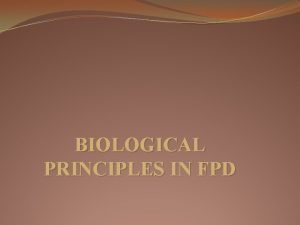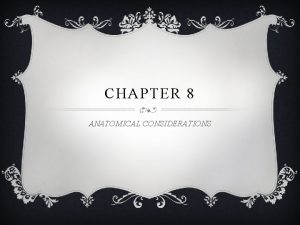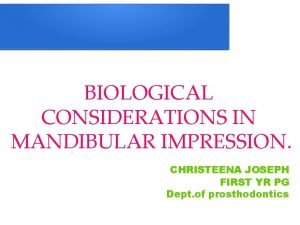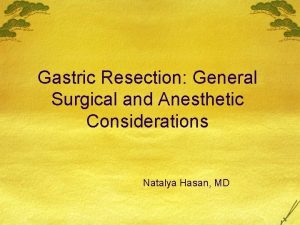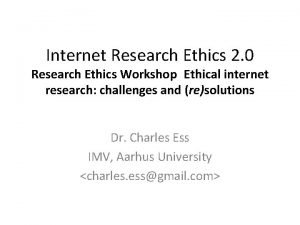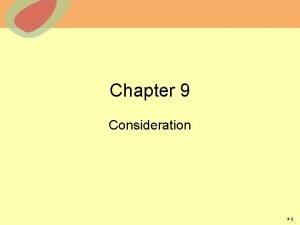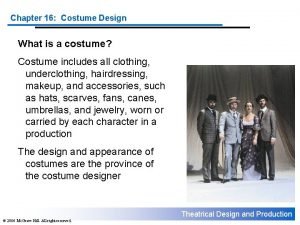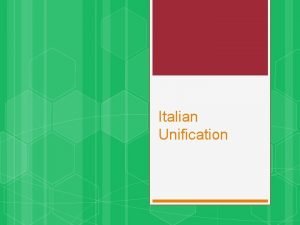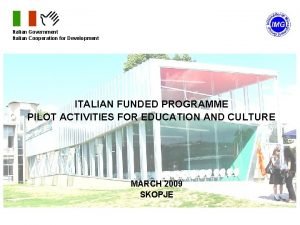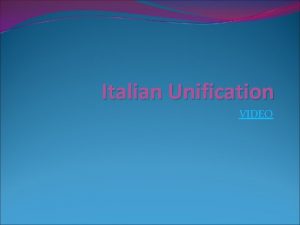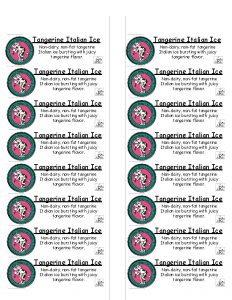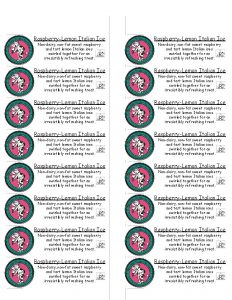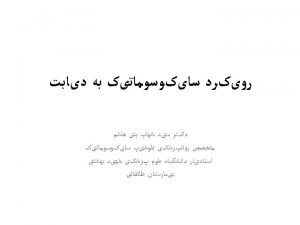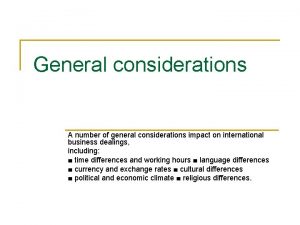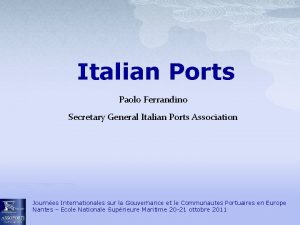Lesson 13 Some general considerations around the italian








































- Slides: 40

Lesson 13 Some general considerations around the italian case after the Second World War • Rupture and continuity after the end of the war • The last results at a juridical level

The Constitutional Charter and the recognition of a constitutional right to the «beauty»

The art. 9 It was discussed by the First Sub-Commission, devoted to «Duties and Rights of citizens» , whose President was Umberto Tupini (Christian-Democrat Deputy) Umberto Tupini (1889 – 1973)

The art. 9 About the discussion Liberal perspectivev. Ssocial perspective Vittorio Emanuele Orlando (1860 – 1952) Costantino Mortati (1891 – 1985)

The art. 9 The results The text: «Republic promotes the development of culture and scientific and technological research. It protects landscape and historical and artistic asset of the Nation» The recognition of a social right The State with its bodies and different levels has the prevalent role It follows the model of the «social Constitutions»

Rebuilding destroyed cities…

Rebuilding destroyed cities…

Voices of the culture… Ranuccio Bianchi Bandinelli (1900 – 1975) Rebuilding after an attentive study following the original Bernard Berenson (1865 – 1959) Rebuilding adapting to the new conditions

Other examples…

Some other examples…

Ravenna

The «italian boom» La dolce vita – Federico Fellini - 1960 La vita agra – Carlo Lizzzani - 1964

The «italian boom»

The «italian boom» A great urbanization A great migration South-North A massive building speculation Francesco Rosi 1963

A government for the modernization The experience of «centre-left» Aldo Moro (1916 – 1978) Amintore Fanfani (1908 – 1999)

The effort for the urban planning reform Fiorentino Sullo (1921 – 2000) Giacomo Mancini (1916 – 2002) Giovanni Pieraccini (1918 - )

Natural disasters and emergencies Collapse of the Vajont Dam 9 October 1963

Natural disasters and emergencies Flood of Florence – 4 November 1966

Natural disasters and emergencies Landslide – Agrigento - 1967

Natural disasters and emergencies

Natural disasters and emergencies Earthquake – Belice - 1968

Natural disasters and emergencies Earthquake – Friuli Venezia-Giulia - 1976 Earthquake – Irpinia - 1980

Private associations and tutelage Created in 1955 by a group of intellectuals, it is till today the most relevant association devoted to the problem of cultural heritage protection and management

Contents, issues, basis… It was an association created by a group of experts, intellectuals, interested in the tutelage and art; It was created with an elitistic approach to the tutelage, against the modern development, especially the urban development; It is an association – today a not lucrative association – with sources obtained from private citizens but also from the State; It has today more than 200 sections and offices in Italy The main aim is «the protection of cultural and natural asset in Italy»

The founders… Pietro Paolo Trompeo (1886 – 1958) Elena Croce (1915 – 1994) Umberto Zanotti Bianco (1889 -1963) Giorgio Bassani (1916 – 2000)

Protecting the «Appia Antica» … At the Age of Roman Empire Quaedulig – Excavations on the «Appia Antica» - 1860

• In 1960 a first project was proposed, to create an archaeological park; • The project was consolidated in 1965; • In 1979 Argan accepted to introduce the project in the «agenda for Rome» Antonio Cederna (1921 – 1996)

Restoration: two opposite perspectives Roberto Pane (1887 – 1987) Balancing ancient and new Cederna – against destruction and modernization

A Commission for the study of cultural asset The Commission «For the tutelage of cultural and environmental heritage» was created by the Parliament in 1964, with a group of Deputies and experts; It was organized in different groups: a) Archaeological objects; b) Artistic objects; c) Environmental sites (also historical centres); d) Libraries; e) Archives

Some figures… Giovanni Astengo (1915 – 1990) Alfredo Barbacci (1896 – 1989) Feliciano Benvenuti (1916 – 1999) Augusto Campana (1906 – 1995) Massimo Severo Giannini (1915 – 2000)

Mino Maccari (1898 – 1989) Ettore Onorato (1899 – 1971) Carlo Ludovico Ragghianti (1910 – 1987)

The result: a new concept of cultural asset 84 General Declarations: It recognizes cultural asset as composed of every object having value of testify of civilization

The last step: a Ministry for cultural and environmental heritage Created with the Decree n° 674/1974 Giovanni Spadolini (1925 – 1994)

Aims and structure It was created as a Ministry for and not of cultural and environemtal heritage, to represent the technical approach to the matter; It was created as a general ministry, both for the cultural and the environmental heritage; It acquired also the control and management of the archives, originally linked to the Ministry for Interior with an inspective role

The structure Office for the communication Cabinet Office Secretary of the Minister Legislative Office The Ministry Offices of the Sub -Secretaries

The structure General Secretary Office I – International Relations - Unesco Office II - National and Communitarian Strategy Office III – Inspective Service

The Structure General Direction for Archaeology, Fine Arts, Landscape General Direction for Archives General Direction for Libraries and Cultural Institutes General Direction for Museums General Direction for Organization General Direction for Economic Management

The role of the Regions Created in 1970, the Regions acquired immediately a series of competencies around cultural heritage and landscape; They were in particular related to the management of schools, libraries, buildings for public education, museums, at a local level; Above all, they acquired a great power around the urban planning policy, consequently around the landscape management and environment, becoming the real actor of the tutelage and of an idea of «democratic access to culture»

The last codification It was the Decree n° 42 – 22 January 2004 (the socalled «Codice Urbani» ) to recollect all the results of the debate and redefine the general lines of management

The tourism
 General consideration of machine design
General consideration of machine design Examples of what goes around comes around
Examples of what goes around comes around Goes around comes around meaning
Goes around comes around meaning Chapter 15 lesson 2 ideas and art of the renaissance
Chapter 15 lesson 2 ideas and art of the renaissance Trade spread the italian renaissance across europe by
Trade spread the italian renaissance across europe by Fascism glorifies the state above the individual
Fascism glorifies the state above the individual Sometimes you win some sometimes you lose some
Sometimes you win some sometimes you lose some Sometimes you win some sometimes you lose some
Sometimes you win some sometimes you lose some Some cakes or some cake
Some cakes or some cake Contact force
Contact force Fire and ice diamante poem
Fire and ice diamante poem Some say the world will end in fire some say in ice
Some say the world will end in fire some say in ice Some may trust in horses
Some may trust in horses Tax considerations for setting up a new business
Tax considerations for setting up a new business Emv kiosk considerations
Emv kiosk considerations Exchange transaction and relationship in marketing
Exchange transaction and relationship in marketing Mechanical considerations of transmission line
Mechanical considerations of transmission line Database design considerations
Database design considerations Compare and contrast first and second language acquisition
Compare and contrast first and second language acquisition Cloud delivery model
Cloud delivery model Writing strategies and ethical considerations
Writing strategies and ethical considerations Basal state blood collection
Basal state blood collection Bioreactor considerations for animal cell culture
Bioreactor considerations for animal cell culture Collaboration design considerations
Collaboration design considerations Principles of tooth preparation fpd
Principles of tooth preparation fpd Antecubial region
Antecubial region Biopharmaceutic considerations in drug product design
Biopharmaceutic considerations in drug product design Alveolingual sulcus parts
Alveolingual sulcus parts Tactical foul
Tactical foul Design considerations icon
Design considerations icon Fluid intake pdhpe
Fluid intake pdhpe Gastrectomy anesthesia considerations
Gastrectomy anesthesia considerations Ethical issues of experimental research
Ethical issues of experimental research Emv kiosk considerations
Emv kiosk considerations Design considerations for mobile computing
Design considerations for mobile computing Qualitative research design
Qualitative research design Venturi mask flow rate
Venturi mask flow rate Ethical considerations examples
Ethical considerations examples Considerations examples
Considerations examples Web security considerations
Web security considerations Practical considerations for costume design might include
Practical considerations for costume design might include



